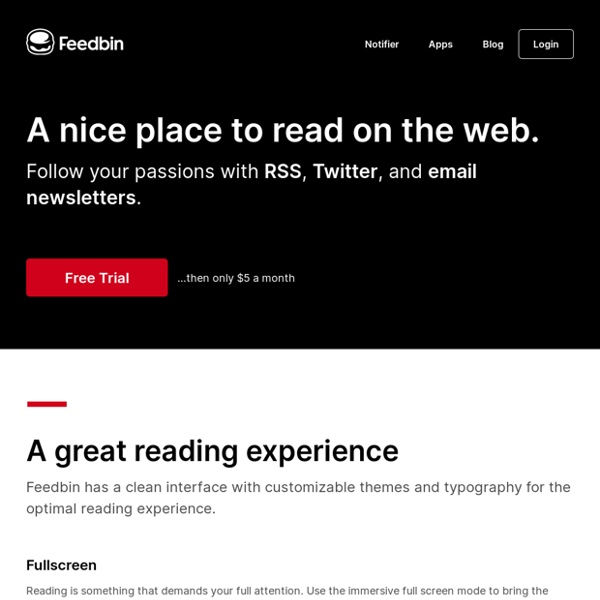



Miniflux - Minimalist RSS Reader NewsBlur The Old Reader Flux RSS [Zotero Documentation] Translations of this page: Les flux RSS sont un excellent moyen de découvrir de nouvelles thématiques. Grâce aux flux, vous pouvez vous abonner aux mises à jour d'une revue, d'un site web, d'un éditeur, d'une institution, d'un groupe de recherche ou de toute autre source et trouver rapidement de nouveaux articles ou travaux. Si vous trouvez un article dans le flux d'une publication que vous souhaitez enregistrer et lire plus tard, vous pouvez l'ajouter à votre bibliothèque Zotero en un clic. S'abonner à des flux Pour vous abonner à un flux, cliquez sur le bouton nouveau Flux au-dessus du volet de gauche dans la fenêtre Zotero. ) ou cherchez le nom de la revue et “flux RSS” dans un moteur de recherche. Une fois que vous avez trouvé l'URL du flux RSS de votre source, cliquez sur le menu Nouveau flux, puis choisissez “A partir de l'URL…”. Lire des flux Lors de la consultation d'un flux, les éléments non lus sont affichés en gras, tandis que les éléments lus sont affichés en texte normal.
go read Infomous Reeder 5 Fluent Reader Open & Organized. Stay in sync with Inoreader, Feedbin, or services compatible with Fever or Google Reader API. Alternatively, import your sources from an OPML file and read locally. Read fluently. Enjoy your contents like never before with the built-in article view for RSS full text tailored to maximize focus. Search. Find anything you want with the power of regular expressions. Privacy first. All your data stays with you. All cookies cleared upon exit. XSS blocked in an isolated context. No personal information collected, ever. Behavior tracking limited. Strict Content Security Policy enforced. Proxy support with PAC.
Netvibes Inoreader mode d'emploi. Partie I La disparition de Google Reader a eu cela de bon qu’elle a laissé la place à la concurrence et a permis à certains éditeurs de proposer des fonctionnalités innovantes. Après avoir testé de nombreux services j’ai choisi voilà deux ans d’utiliser Inoreader de la société bulgare Innologica et c’est également l’agrégateur que je conseille à mes clients lorsqu’ils veulent mettre en place des traitements avancés autour des flux RSS (sinon Netvibes ou Feedly sont suffisants). Inoreader étant bourré de fonctionnalités j’ai décidé d’en faire le tour dans une série de billets tutoriels que j’inaugure aujourd’hui. Attention, pour profiter des possibilités les plus avancées de ce service il faudra passer en mode payant, soit entre 13 et 45 euros par an. Terminologie : le terme que j’utiliserai le plus fréquemment pour désigner les articles ou les billets diffusés dans un flux RSS sera celui d’item. Découvrir Inoreader La première chose à faire est évidemment de se créer un compte. Ajouter des flux RSS
Feeder March 25, 2022 10:18 As we hope you already know, with Feeder it’s super easy to follow RSS feeds and other sources of content: Simply add the URL to the search bar and we’ll do the rest. But with our extensions for Chrome, Firefox and Microsoft Edge, it’s even easier! The extension will let you know if the page you visit has an RSS feed available. If you visit an RSS feed link in a tab, we’ll provide you with a preview and an option to subscribe in one click. Now, we’re rolling out a major improvement to this subscription page. Rich previews The preview of the RSS feed looks even better now thanks to a bigger reader, a short excerpt and a thumbnail image. Choose reader to subscribe in If you don’t use Feeder as your main RSS reader, Feeder is still a great option to add RSS support to your browser. Email subscription Would you like a summary of the latest news sent to your email?
Comparatif d’agrégateurs de flux RSS (2ème partie) Le mois dernier nous avons comparé cinq agrégateurs de flux RSS et pour compléter cette analyse, nous vous proposons d’en tester cinq autres dans ce mois-ci. Les voici. Newsblur ( Newsblur est un agrégateur qui a été lancé par la société américaine éponyme (composée semble t-il d’une seule personne, le développeur Samuel Clay) en 2009. L’ajout de flux RSS se fait en bas à gauche de la page d’accueil. Feed : flux natif ;Text : les articles sont présentés en entier (full RSS) et dans un mode lecture plus agréable (Premium) ;Story : l’article est affiché sur son site d’origine. Il est possible de régler l’ensemble de ces critères au niveau de chaque flux et/ou de chaque dossier. Fig. 1 Fonctionnalités disponibles pour un flux dans Newsblur La suite de cet article est réservée aux abonnés. Christophe Deschamps, Consultant-formateur : veille stratégique, intelligence économique, social KM, e-réputation, mindmapping, IST (